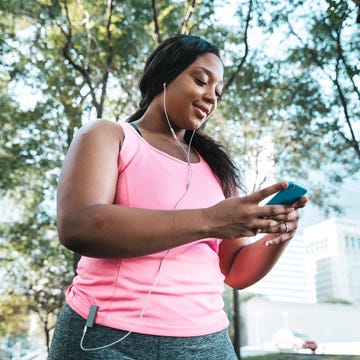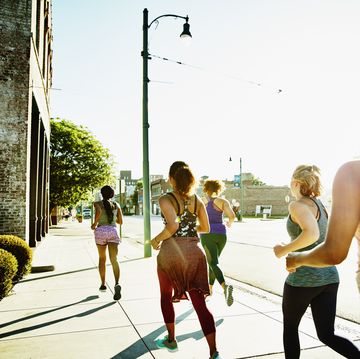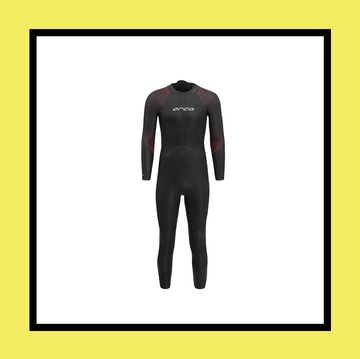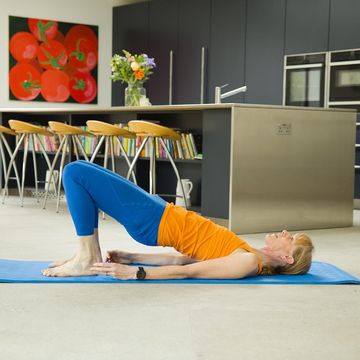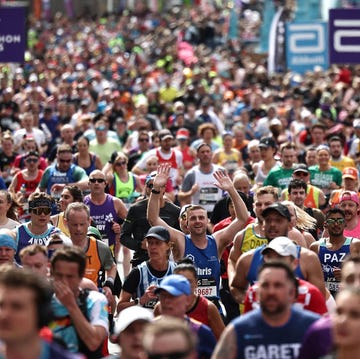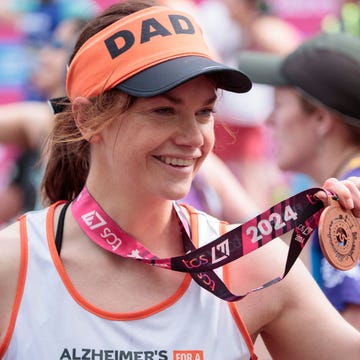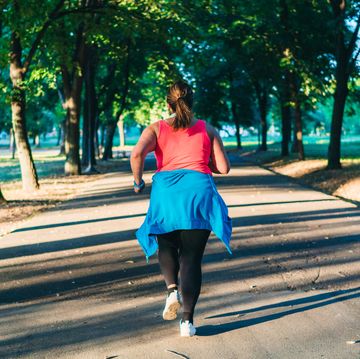Are you a runner who thinks ice baths are a world of pain and should be avoided at all costs? Recent evidence might change your mind.
Thanks in part to Wim Hof, whose BBC show Freeze The Fear introduced the concept of cold water therapy to viewers across the UK, attitudes towards cold water and its positive effects on muscle recovery and other disorders are beginning to change.
Many people who take part in cold water therapy or cold water swimming are quickly converted and become almost evangelical about spreading the word about the benefits. In his book What Doesn’t Kill Us, US journalist and Wim Hof sceptic Scott Carney investigates the Wim Hof Method and ends up becoming fully converted to cold water therapy combined with conscious breathing and its benefits. ‘Exposure to cold helps reconfigure the cardiovascular system and combat autoimmune malfunctions. It is also a pretty darned good method for simply losing weight… More profound than that, however, is the intrinsic understanding that humans are not just bodies bounded by the barrier of their skin; we are part of the environment we inhabit.’
Surfer Sophie Hellyer, brand ambassador for outdoor change robe provider Dryrobe, is equally effusive on the subject. She also hosts Rise Fierce retreats across the UK which focus on the transformative power of cold water and incorporate wild swimming, surfing and yoga with other women.
‘What I love about cold water therapy is that it’s like hitting a big reset button,’ she says. ‘Whatever mood I’m in, it completely refreshes me. While you’re in cold water, you can’t think about anything else other than breathing and the sensations of the water, so whatever it is that’s going on in life – stresses, injuries or whatever's on your mind – at that moment you’re just thinking about breathing, the sensations of your body and nothing else. Afterwards, you feel refreshed – it’s an empowering feeling. I’m pretty much addicted.’
Along with Hellyer, we spoke to Dan Kett, physiotherapist and cold water expert at P3RFORM, to find out why runners should add cold water therapy to their running training.
What is cold water therapy?
Cold water therapy is immersion in cold water, usually below 14C, used as a form of recovery following intense exercise. The aim, for some, is to reduce the severity of delayed onset muscle soreness (DOMS) which is commonly experienced 24-48 hours post-exercise.
Cold water therapy can be performed safely at home through the use of ice baths or cold showers, however, you should evaluate all the risks first (some of which we have outlined below). Individuals with underlying health conditions such as angina (or other heart conditions), altered or reduced skin sensation, poor circulation or epilepsy should consult a medical professional before attempting cold water therapy.
What does cold water therapy do?
When you jump into cold water or an ice bath, your blood vessels constrict and get smaller. And when you get out, the change in temperature causes them to quickly reopen. This does a few things to the body:
- It helps flush out lactic acid
- It delivers oxygen and nutrients to the muscles which aids recovery
- It increases blood flow and speeds up circulation
What are the benefits of cold water therapy?
Cold water therapy has been reported to benefit the body (and mind) in many ways, and after a tough workout or race, cold water immersion can be particularly useful. Here’s why...
It boosts recovery
One of the main benefits of cold water therapy for runners is helping to boost recovery. ‘By causing vasoconstriction of blood vessels, it reduces inflammatory processes in peripheral muscles – ie leg muscles – following exercise,’ says Kett.
‘Cold water therapy is best used for recovery to allow for increased running frequency or to prepare you for optimal running performance – ie a race or PB attempt.’
It reduces muscle pain
‘Furthermore, the application of cold water therapy can reduce the sensation in the nerve endings that detect pain. Combined, these effects are used to reduce DOMS,’ says Kett.
This will therefore allow runners to train more frequently which, in turn, will accelerate improvements in cardiovascular fitness.
‘If you feel that your muscular strength or endurance is limiting your performance, then cold therapy may not be for you. Accepting DOMS on rest days will allow your body to adapt and become strong for long-term improvements in running performance.’
Is cold water therapy good for you?
As well as boosting recovery, cold water therapy has been shown to boost fitness, mood, immune system and even your libido. Recent studies have also shown that it can slow the onset of dementia and can help reduce anxiety.
A 2020 study in the International Journal of Environmental Research and Public Health also found that it has positive effects on the cardiovascular system, endocrine system and the psyche, including reducing the symptoms of depression.
How to start cold water therapy and introduce it into your training?
The first important thing to note is that you should introduce your body to cold water immersion or swimming slowly and always with other people present in a safe environment, as there are major risks including hypothermia, cardiac arrest and drowning. It can be dangerous if not undertaken with the relevant experience, training, doctor’s approval, fitness levels and professional supervision, so ensure you evaluate all risks and dangers.
Kett recommends that cold water therapy should be performed after training or on days you’re not training. ‘It should not be performed before training as this can cause impairment in muscle function through the shortening of connective tissues and reducing proprioceptive feedback.’
Ideally, immersion in cold water should be completed for approximately 10-20 minutes. Dr Susanna Soberg, a leading international scientist and expert in cold and heat therapy, says the minimum threshold – or the 'sweet spot' – for cold exposure for health benefits is 11 minutes of cold water therapy per week. This time window was also backed up by a study that found a 10-minute ice bath was as beneficial as a 20-minute ice bath.
However, if you're new to cold water therapy or cold water swimming, do not attempt to immerse yourself for this duration straight away – you need to build up gradually.
‘Research shows that the stress of a short, cold-water dip primes the immune system to deal with a threat and thus is beneficial, but too much exposure can actually lead to immunosuppression,' says Hellyer. ‘It’s not about the length of time, it’s more important just to have a quick burst. The more you do it, the more habituated you become.'
If using a cold shower, it may be beneficial to start with the water warm, suggests Kett. 'Slowly reduce the temperature to help you gradually tolerate the cold. The aim is for the water to be 15C or less.’
How long you do it after your workout or run can make a difference, too, with one study suggesting that you have a two-hour window afterwards in which to take the plunge in order to reap the benefits for soreness and muscle recovery.
How important is breathwork in cold water therapy?
Working on your breathing is a crucial part of cold water therapy. ‘When you go into cold water you might suffer from cold shock which leads to a dramatic increase in your breathing and heart rate,’ says Hellyer. ‘One of the natural responses to this is hyperventilation which can be dangerous, so it’s important to control your breathing. Focus on long, slow and steady exhales which trigger the parasympathetic nervous system and keeps you calm, and within a minute or so the cold shock will pass.’






